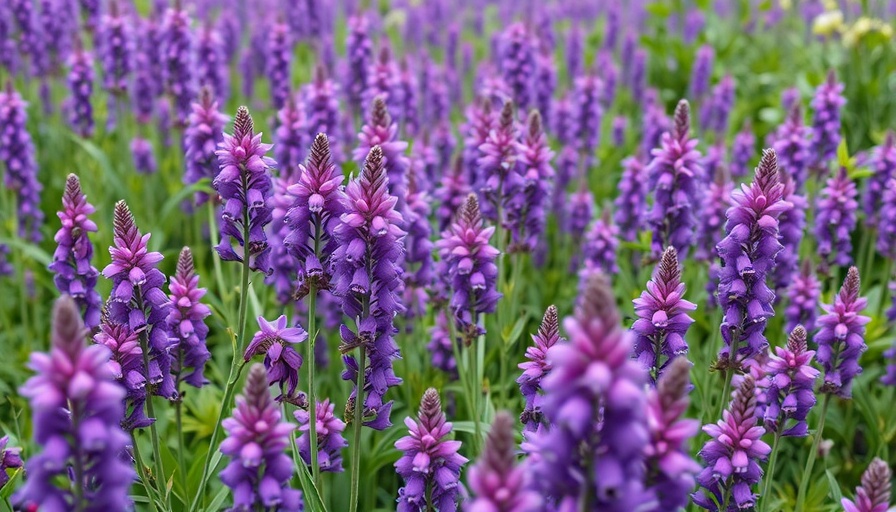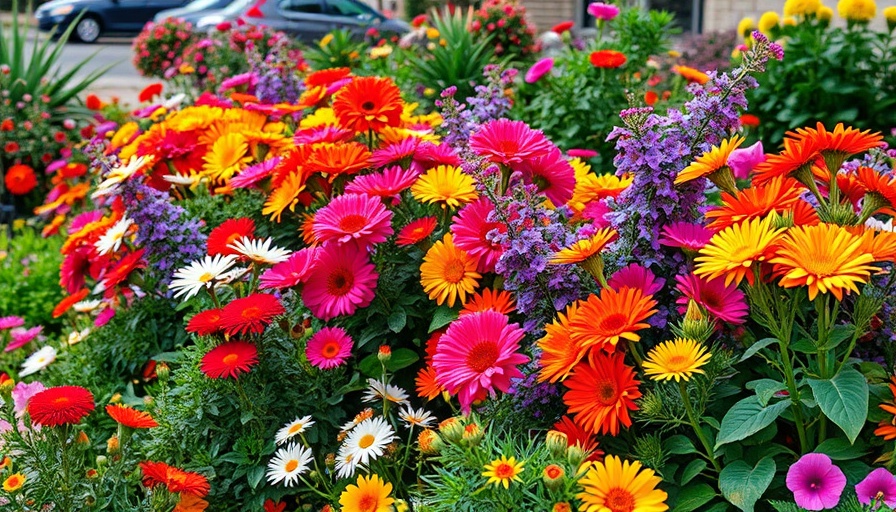
Discover the Vibrant Beauty of False Indigo
One of the most striking plants to introduce into your garden is the False Indigo (Baptisia). This perennial flower not only enchants with its rich blue or purple blooms in late spring but also thrives in a variety of garden designs. As a hardy specimen, it’s perfect for those looking to enhance their flower garden or incorporate native plants for sustainable landscaping. If you're curious about how to grow and care for this captivating flower, you're in the right place!
Gardening Tips for Growing False Indigo
Successful cultivation of False Indigo begins with understanding its needs. This plant flourishes in full to partial sun, making it a versatile addition to both sunny spots and partially shaded areas. Additionally, it prefers well-drained, organic soils rich in nutrients. When planting your Baptisia, consider incorporating plenty of compost to enrich the soil. Not only will this bolster growth, but it also helps in water retention, ensuring your new plant gets just the right amount. Regular watering, especially in the first year, will encourage a robust root system.
Flower Bed Ideas to Enhance Your Landscape
Think creatively about where you position False Indigo within your garden. This stunning flower works wonderfully in herb gardens and has the potential to blend beautifully with ornamental grasses. The height and structure of Baptisia make it an excellent backdrop against shorter flowering perennials. Consider mixing with daylilies or coneflowers to create visual contrast. For optimal aesthetics, plant in groups of three or more; this creates a striking display that draws the eye and captivates garden visitors.
Counterarguments and Diverse Perspectives
While False Indigo is beloved by many, some gardeners express concerns over its competitiveness. It creates deep roots that can outcompete surrounding plants for nutrients and water. However, those who appreciate sustainable gardening practices will find that its deep rooting system allows for better soil aeration and can aid drought resistance in surrounding plants. Embracing a diverse planting strategy while being mindful of spacing can mitigate any potential downsides.
Actionable Insights for Sustainable Gardening
Integrating organic gardening practices with your False Indigo plantings can foster a healthier garden ecosystem. Opt for organic fertilizers to nourish your plants without the downsides of synthetic options. Additionally, encourage pollinators like bees and butterflies by planting nectar-rich companions alongside your Baptisia. This not only enriches your garden’s biodiversity but also enhances the beauty and ecological sustainability of your backyard landscape.
Garden Maintenance and Long-Term Care for False Indigo
Once established, False Indigo requires minimal maintenance, making it a perfect choice for busy gardeners. Occasional deadheading will encourage additional blooms, and a thorough pruning in early spring will promote new growth. However, watch for garden pests—but worry not! Baptisia is relatively pest-resistant. If issues arise, consider organic pesticide options to maintain your commitment to an environmentally friendly garden.
Conclusion: Transform Your Garden with False Indigo
False Indigo is more than just a supplement to your flower bed; it's a statement piece within any garden design. By understanding how to care for this beautiful plant and incorporating it into your landscaping ideas, you set the groundwork for a vibrant, sustainable garden. Remember, the key to success lies in understanding the plant's needs, from soil health to companion planting. So why wait? Start planning your garden today, and let the beauty of False Indigo inspire your outdoor space!
 Add Row
Add Row  Add
Add 




Write A Comment